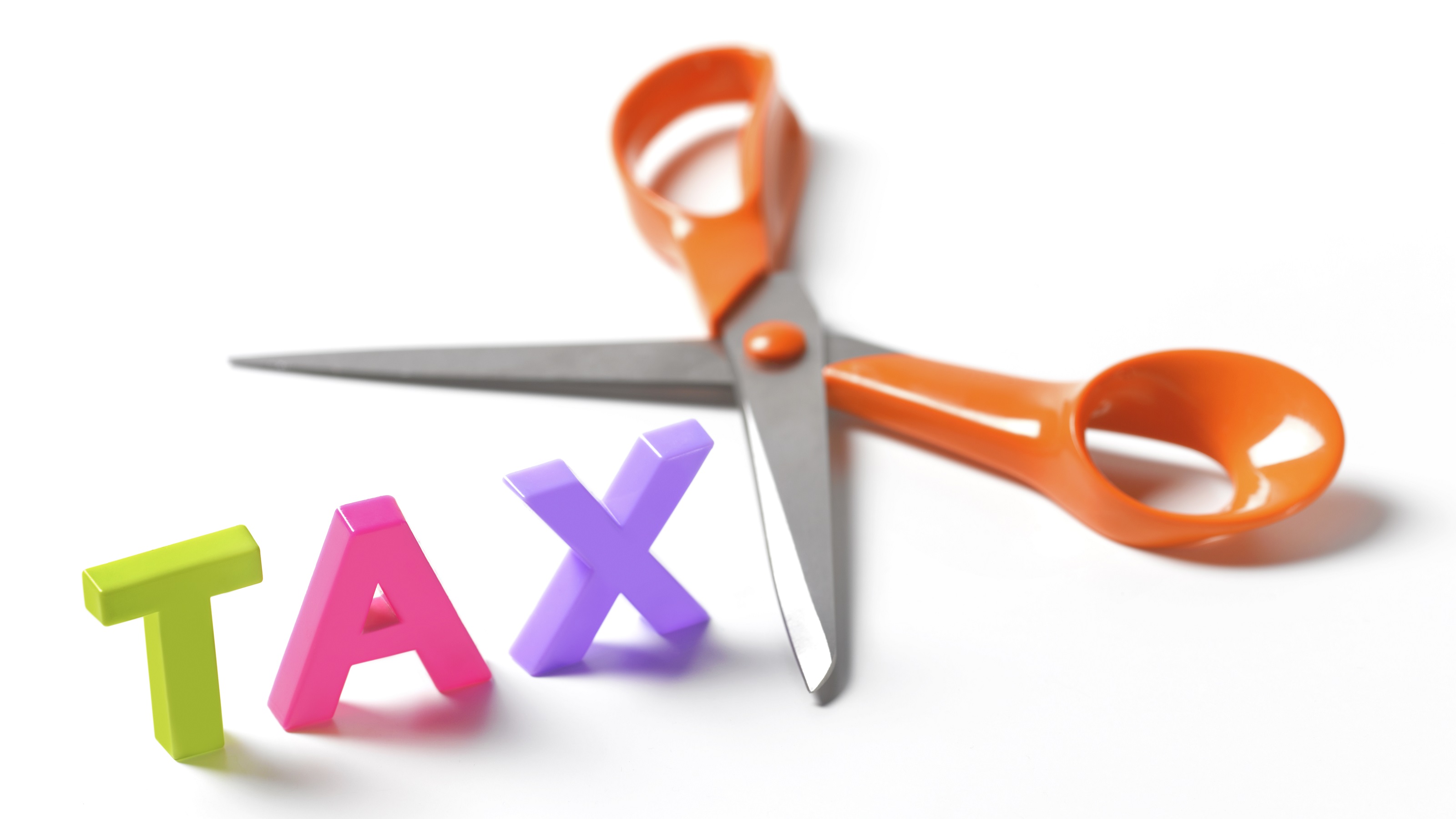This Trust Strategy Can Reduce Your Taxes Big-Time
Upstream basis planning can help younger wealthy people pay less taxes on highly appreciated assets if they appoint an aging relative as a trust beneficiary.


Editor’s note: This is part 12 of an ongoing series about using trusts and LLCs in estate planning, asset protection and tax planning. The effectiveness of these powerful tools — especially for asset protection and tax planning — depends very much on how they are configured to work together and whether certain types of control over assets and property are surrendered by the property owner. See below for links to the other articles in the series.
Upstream basis planning is a strategy that involves gifting assets to someone who’s going to pass away before you in order to reduce capital gains taxes. This technique is reliant on the rule that to get a step-up in basis, assets must be included in the gross estate of a person who dies.
Put differently, during the lifetime of a trust maker, whether the value of a trust’s assets goes up or down, a trust (neither a revocable trust nor an incomplete gift irrevocable trust) will not reduce or diminish the capital gains tax consequences when the trust maker sells the assets. If the trust assets have a lower basis than the fair market value, once the trust sells or disposes of the assets by certain transfers, either the trust or the trust maker will need to recognize the capital gain (with the gain basically calculated as the sale price minus the basis) and pay capital gains taxes on the gain. (If the value of the trust assets go down in value, the trust maker or your trust may want to recognize the capital loss.)
From just $107.88 $24.99 for Kiplinger Personal Finance
Become a smarter, better informed investor. Subscribe from just $107.88 $24.99, plus get up to 4 Special Issues

Sign up for Kiplinger’s Free Newsletters
Profit and prosper with the best of expert advice on investing, taxes, retirement, personal finance and more - straight to your e-mail.
Profit and prosper with the best of expert advice - straight to your e-mail.
However, if a younger person chooses an older relative, such as an aging parent, as a trust beneficiary, when that older person dies, the assets in the trust will receive the step-up in basis and potentially return to the ownership of the younger person at the higher value.
Here’s how it could work
Example. A parent’s adult offspring has land worth $5 million and a basis of $500,000. In 2020, the child makes a completed gift of the land to an asset protection trust with their aging parent as beneficiary, using $5 million of the child’s lifetime exemption from gift and estate taxes. The child ensures that the entire value of the land will be included in the parent’s gross estate by also giving the parent a testamentary general power of appointment, which permits the parent upon their death to leave the land to anyone whom the parent wishes, including the parent’s creditors. The parent dies in 2024 when the land has doubled in value to $10 million. Happily, the parent exercised the power of appointment in favor of the child, giving the land back to the gifting child. More fortunately, the parent has adequate estate tax exemption so that even though the land is included in the parent’s gross estate, the land is not subject to estate tax. The best result is that because the land was included in the parent’s gross estate, the child gets the land back with a step-up in basis to the time-of-death fair market value of $10 million.
How everything is set up is critical
Yes, you read that right — upstream gifts from the younger generation to the older generation create intergenerational basis step-up opportunities. However, the assets gifted from the younger to the older generations must be included in the gross estate of the older generation — potentially taxable.
Additionally, the assets must be directed via a power of appointment at the discretion of the older generation. Because of the potential for estate tax by the older generation, as well as the granted power to appoint trust assets to beneficiaries, this planning technique must be carefully considered.
My next article will be about using LLCs to protect against liabilities originating from LLC-owned assets.
Other Articles in This Series
- Part one: To Avoid Probate, Use Trusts for Estate Planning
- Part two: How Quitclaim Deeds Can Cause Estate Planning Catastrophes
- Part three: Revocable Trusts: The Most Common Trusts in Estate Planning
- Part four: With Irrevocable Trusts, It’s All About Who Has Control
- Part five: Ins and Outs of Domestic Asset Protection Trusts (DAPTs)
- Part six: Irrevocable Trusts: Less Control Equals More Asset Protection
- Part seven: Should You or the Trust Pay a Trust’s Income Taxes?
- Part eight: How to Handle Irrevocable Trust Assets Tax-Efficiently
- Part nine: Repeal the Death Tax? These Are the Taxing Trade-Offs
- Part 10: Gift and Estate Tax vs Capital Gains Tax: Which Is Less?
- Part 11: This Double-Dip Trust Benefit Really Is Too Good to Be True
Profit and prosper with the best of Kiplinger's advice on investing, taxes, retirement, personal finance and much more. Delivered daily. Enter your email in the box and click Sign Me Up.

Rustin Diehl advises clients on tax, business and estate planning matters. Rustin serves as an adjunct professor, frequent speaker and is current or former chair of professional associations. Rustin is a prolific author and has published many technical and popular articles on estate and business issues, as well as drafting and advising legislators in developing numerous statutes pertaining to trust and estate and business planning, creditor exemption planning and digital asset (blockchain) trusts and blockchain entities known as decentralized autonomous organizations.
-
 I'm want to give my 3 grandkids $5K each for Christmas.
I'm want to give my 3 grandkids $5K each for Christmas.You're comfortably retired and want to give your grandkids a big Christmas check, but their parents are worried they might spend it all. We ask the pros for help.
-
 If You're Not Doing Roth Conversions, You Need to Read This
If You're Not Doing Roth Conversions, You Need to Read ThisRoth conversions and other Roth strategies can be complex, but don't dismiss these tax planning tools outright. They could really work for you and your heirs.
-
 Could Traditional Retirement Expectations Be Killing Us?
Could Traditional Retirement Expectations Be Killing Us?A retirement psychologist makes the case: A fulfilling retirement begins with a blueprint for living, rather than simply the accumulation of a large nest egg.
-
 I'm Retired and Want to Give My 3 Grandkids $5,000 Each for Christmas, But Their Parents Don't Want Them to Spend It All.
I'm Retired and Want to Give My 3 Grandkids $5,000 Each for Christmas, But Their Parents Don't Want Them to Spend It All.You're comfortably retired and want to give your grandkids a big Christmas check, but their parents are worried they might spend it all. We ask the pros for help.
-
 I'm a Financial Planner: If You're Not Doing Roth Conversions, You Need to Read This
I'm a Financial Planner: If You're Not Doing Roth Conversions, You Need to Read ThisRoth conversions and other Roth strategies can be complex, but don't dismiss these tax planning tools outright. They could really work for you and your heirs.
-
 Could Traditional Retirement Expectations Be Killing Us? A Retirement Psychologist Makes the Case
Could Traditional Retirement Expectations Be Killing Us? A Retirement Psychologist Makes the CaseA retirement psychologist makes the case: A fulfilling retirement begins with a blueprint for living, rather than simply the accumulation of a large nest egg.
-
 I'm a Financial Adviser: This Is How You Can Adapt to Social Security Uncertainty
I'm a Financial Adviser: This Is How You Can Adapt to Social Security UncertaintyRather than letting the unknowns make you anxious, focus on building a flexible income strategy that can adapt to possible future Social Security changes.
-
 The Stoic Retirement: Ancient Wisdom for Today’s Biggest Life Transition
The Stoic Retirement: Ancient Wisdom for Today’s Biggest Life TransitionA "Stoic retirement" doesn't mean depriving yourself. It's a character-based approach to life and aging that can bring calm and clarity.
-
 11 Outrageous Ways To Spend Money in Retirement
11 Outrageous Ways To Spend Money in RetirementWhether you have excess cash to spend or want to pretend, here’s a look at 11 ridiculous ways retirees can splurge.
-
 I'm a Financial Planner for Millionaires: Here's How to Give Your Kids Cash Gifts Without Triggering IRS Paperwork
I'm a Financial Planner for Millionaires: Here's How to Give Your Kids Cash Gifts Without Triggering IRS PaperworkMost people can gift large sums without paying tax or filing a return, especially by structuring gifts across two tax years or splitting gifts with a spouse.
-
 'Boomer Candy' Investments Might Seem Sweet, But They Can Have a Sour Aftertaste
'Boomer Candy' Investments Might Seem Sweet, But They Can Have a Sour AftertasteProducts such as index annuities, structured notes and buffered ETFs might seem appealing, but sometimes they can rob you of flexibility and trap your capital.